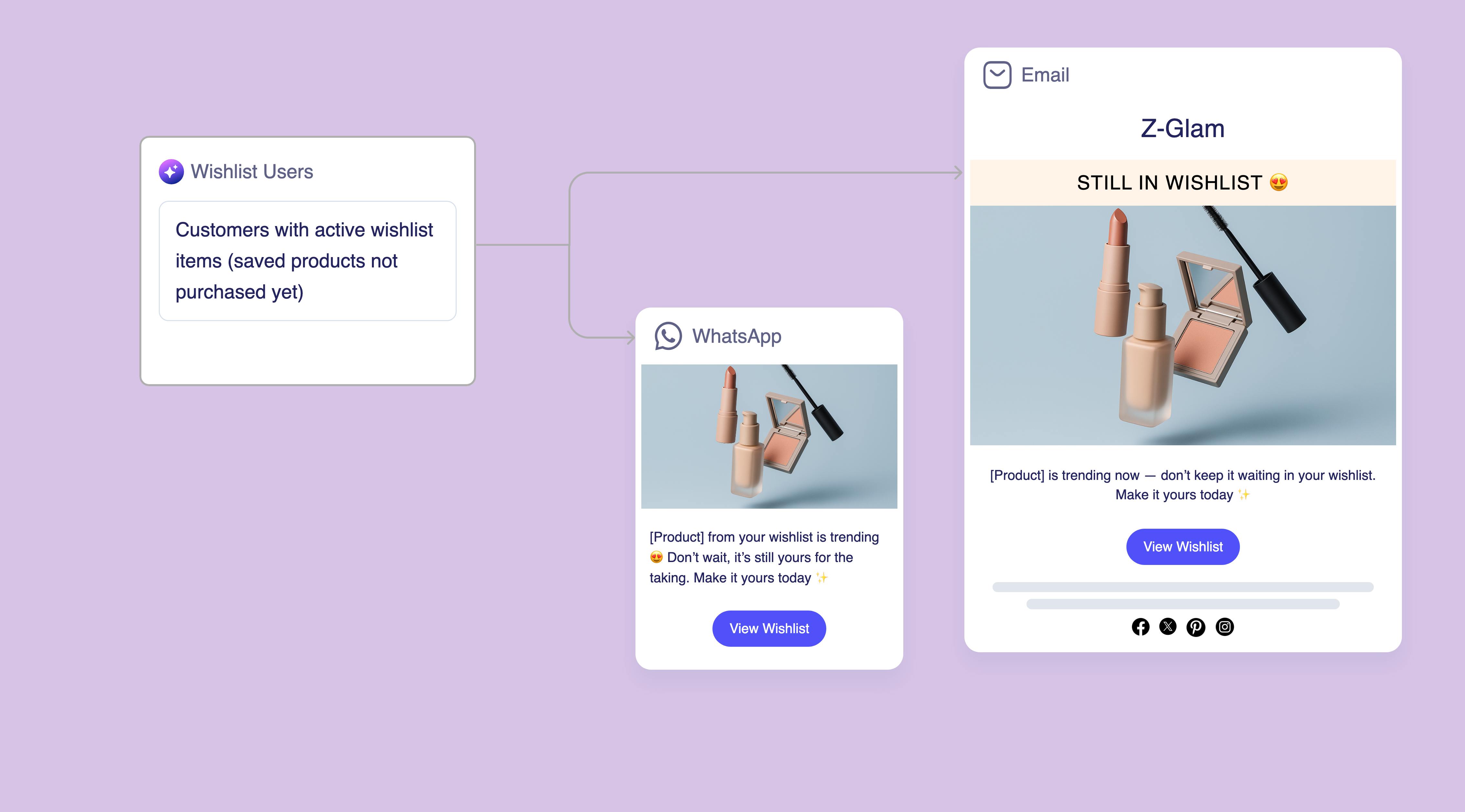
Wishlist Product Tease
Drive reactivation by creating urgency around wishlist items through trending alerts and stock scarcity messaging.

What are Wishlist Product Tease Campaigns?
Wishlist Product Tease Campaigns target customers who saved items to their wishlist but haven’t purchased them yet. By sending reminders, showcasing trending appeal, or teasing availability, brands can convert intent into sales and prevent items from being forgotten.
Why Wishlist Product Teasing Matters

Challenges

Opportunities
Outcomes
Higher Wishlist Conversion Rates
Increased Customer Reactivation
Better Revenue from Saved Interest
Who is it for?
Audience
Exclusions
How it Plays Out
A sample sequence for this use case.
Still in your wishlist? [Product] is getting popular — grab it before it sells out → [CTA]
[Product] from your wishlist is trending now. Don't miss your chance → [Link]
Wishlist alert: [Product] stock is running low - secure yours now → [Buy Now]
Last call for your wishlist favorite - limited stock remaining → [Act Fast]
Best Practices
- Use authentic trending data and real stock levels rather than artificial scarcity to maintain customer trust and credibility.
- Reference specific wishlist items rather than generic wishlist reminders to create personal relevance and product recall.
- Vary urgency messaging between popularity trends and stock scarcity to test what motivates individual customers most effectively.
Wishlist Product Tease Examples & Prompts
Channel Examples
Ready-to-use Zenie Prompts
Zenie can automatically track wishlist activity and create personalized nudges at scale.
Explore Similar eCommerce Marketing Strategies
FAQs
How often should wishlist product tease campaigns be sent to avoid annoyance?
Most eCommerce businesses find weekly wishlist teases work well for active items, with monthly reminders for older saves. The key is ensuring each message provides genuine value through real trending data or stock updates rather than repetitive generic nudging.
What makes wishlist teasing different from regular wishlist reminders?
Wishlist teasing focuses on external factors like popularity and scarcity rather than just reminding about saved items. This approach creates urgency through social proof and availability concerns, making the nudge feel timely and actionable rather than repetitive.
Should wishlist tease campaigns use real data or can urgency be manufactured?
Authentic data performs better long-term because customers learn to trust your urgency signals. Using real trending metrics and actual stock levels builds credibility, while artificial scarcity can damage customer relationships when discovered.
How do you segment customers for different types of wishlist urgency messaging?
Analyze customer behavior to identify who responds to popularity signals versus scarcity messaging. Price-conscious customers often respond to trending alerts, while exclusive-minded shoppers react more to limited stock warnings.
What's the best way to measure wishlist tease campaign effectiveness?
Track wishlist-to-purchase conversion rates, campaign engagement metrics, customer satisfaction with urgency accuracy, and long-term wishlist usage patterns. Monitor whether tease campaigns lead to sustained wishlist engagement or cause customers to abandon the feature.


